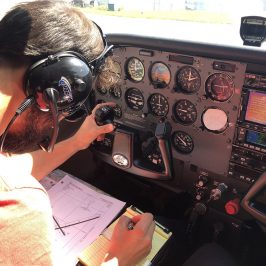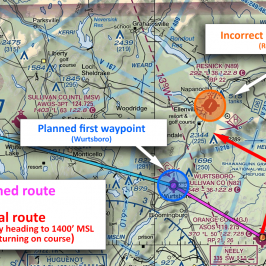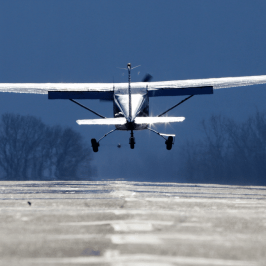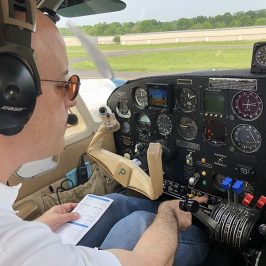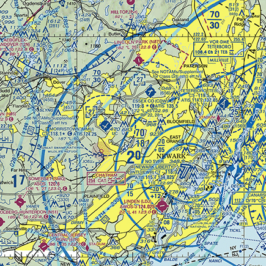Take a look. This flowchart is Figure 4-42 in Volume 4 of FAA Order 8900.1. It can be found on FSIMS, here.
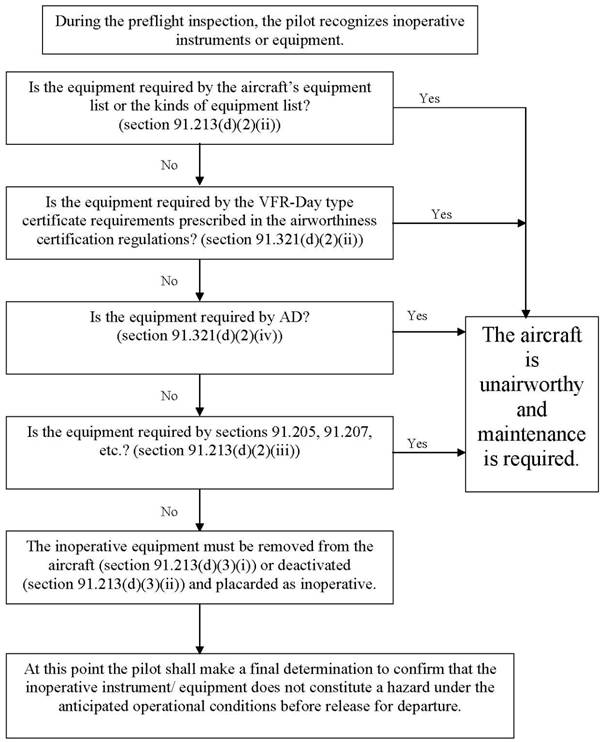
Step 1: MEL.
As indicated above, we’re back to MELs. Per the flowchart, the first step is determining if the inoperative equipment appears in the aircraft’s equipment list or KOEL (Kinds of Equipment List) per… “section 91.213(d)(2)(ii).” Incidentally, references to 91.213(d)(2)(i), (ii), (iii) and (iv) appear throughout this particular document.
But there’s one step which the flowchart assumes has already taken place. It’s clear what that step is based on the title of Figure 4-42: “Flowchart – Operating Without a Minimum Equipment List.” Indeed, just a casual reading of 14 CFR 91.213 reveals nine instances of the phrase “Minimum Equipment List” before the reader even arrives to section (d). Those nine instances can be found “above the red divider,” from our 14 CFR 91.213 excerpt quoted earlier in the article.
The MEL, or Minimum Equipment List, is a common source of confusion among pilots. The MEL might better be imagined not as a minimum list of equipment necessary for the aircraft to be considered airworthy, but rather a list of equipment which may or may not be required for different types of flight operations.
First and foremost, for the vast majority of all light piston aircraft operated solely under Part 91, there will be no applicable MEL. Further, although generic MMELs (Master MELs) have been published by the FAA for single-engine airplanes, they do not apply except as a template for a specific, approved MEL for a specific single-engine airplane. (In other words, an MMEL can’t simply be pressed into service on its own.) However, the pilot still must determine whether one exists because if it does, it is applicable to the aircraft and must be followed. In our example, there is no MEL, therefore we may continue. Note: we are moving quickly through this part of the regulation to arrive at the non-MEL conclusion; it is only possible to do so with certain types of aircraft, including small, non-turbine powered airplanes.
This also moves our focus to section (d) of 91.213. Section (d) is the “bread and butter” of operating with inoperative equipment in our examples.
Step 2: Aircraft equipment list or KOEL (Kinds of Operations Equipment List)
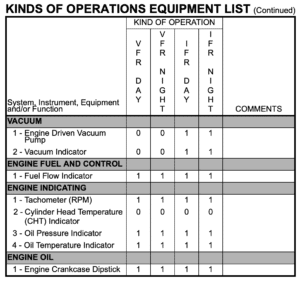
Every aircraft must maintain an equipment list throughout its lifespan. Many aircraft manufacturers also publish a “Kinds of Operation Equipment List” or KOEL which will clearly describe which equipment must be on board and operating for the specific operation. For example, a taxi light might be “O” (optional) but position lights are “R” (required)… for night VFR and IFR operations. In such an example, the KOEL does not require operating position lights for Day VFR operations. Other codes might include “S” for standard equipment or “A” for optional equipment not required (in addition to) standard or required equipment. This nomenclature will vary based on manufacturer and the age of the aircraft model.
If a KOEL is not provided for a specific aircraft by the manufacturer, the aircraft’s equipment list can be reviewed to determine which equipment may be considered “optional.” The means and methods by which this can be determined also vary widely based on aircraft manufacturer and certification basis (i.e. CAR 3 vs. Part 23). Most modern light aircraft manufactured with Standard Airworthiness Certificates have published KOELs.
In our example, reviewing the Piper Turbo Arrow III’s KOEL shows that a navcom radio is not required equipment for Day VFR operations.
Step 3: VFR-Day Type Certificate Requirements
“What the heck is that?”
To understand this fully, we need to look at how an airplane is “born.” What follows is a highly condensed, but accurate account of the process.
Joe Flapretract decides to build and sell a light piston airplane, certified under Part 23. Joe spends a lot of time and invests in a great deal of engineering to build his first flying test aircraft. He then submits to the FAA a large assortment of data, including aircraft specifications, drawings of the airplane and all of the parts needed to build it, and the airworthiness limitations section of the “Instructions for Continued Airworthiness.” Upon the FAA’s review these documents, the Administrator will issue a Type Certificate, followed by a Production Certificate, the latter of which permits Mr. Flapretract to actually sell his aircraft to the public. Once he builds a few airplanes, the FAA will visit the factory and if all is well, a Standard Airworthiness Certificate will be issued for the type design.
Of course, in reality this process takes years, and in some cases over a decade, to conclude, and is riddled with many complicated smaller steps between these major leaps.
We’re interested in the Type Certificate part of this process. While Mr. Flapretract and the FAA are working together to reach that milestone, the Administration will create a Type Certificate Data Sheet for the aircraft. This data sheet includes parts required for the aircraft to be operated legally and safely, limitations, and other important information.
So when the FAA’s flowchart references 14 CFR 91.213(d)(ii) and asks the pilot to determine whether the inoperative equipment doesn’t violate its “VFR-day Type Certificate requirements,” how could one do so?
By visiting the TCDS page, the FAA’s repository of Type Certificate Data Sheets for all aircraft with Standard Airworthiness Certificates.
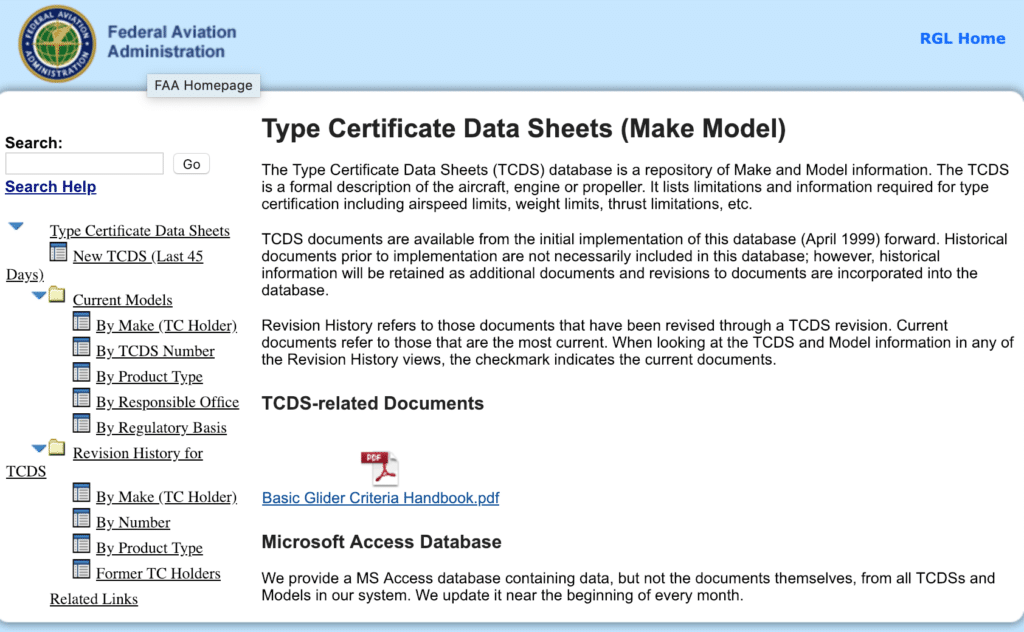
If you go looking for it, Type Certificate Data Sheet No. 2A13, Rev. 59 covers no less than eighteen different models from the PA-28 series, including the specific one we’re concerned with, the PA-28R-201T on page 28. Spoiler alert, this is not the droid you’re looking for, at least not this time. But this is a good example of what the TCDS speaks to: required engine, propeller, airspeed limitations, weight and balance, fuel capacity, placards, and so on. But the TCDS does not require the presence of an operative radio to meet the Turbo Arrow III’s Day-VFR Type Certificate Requirements.
(Continued in Part III)


